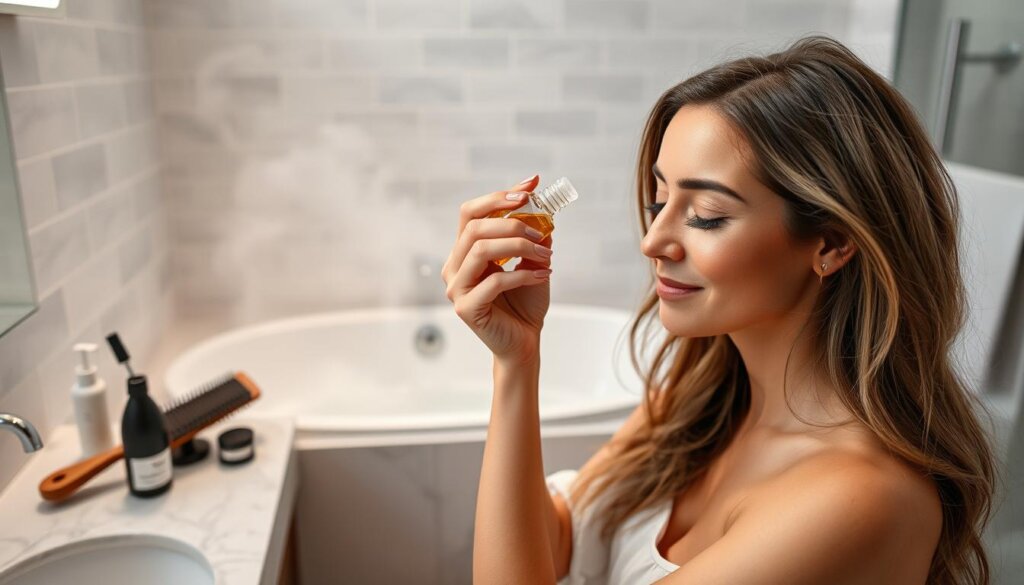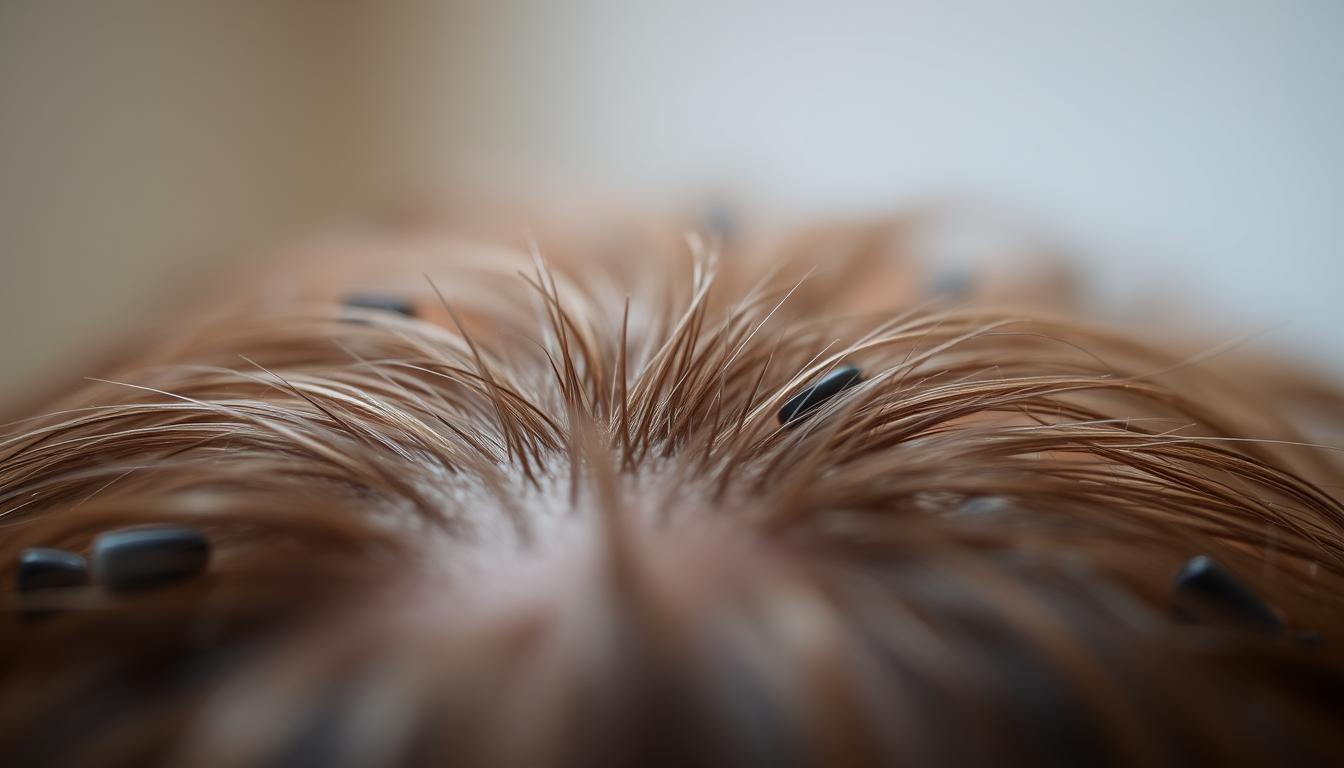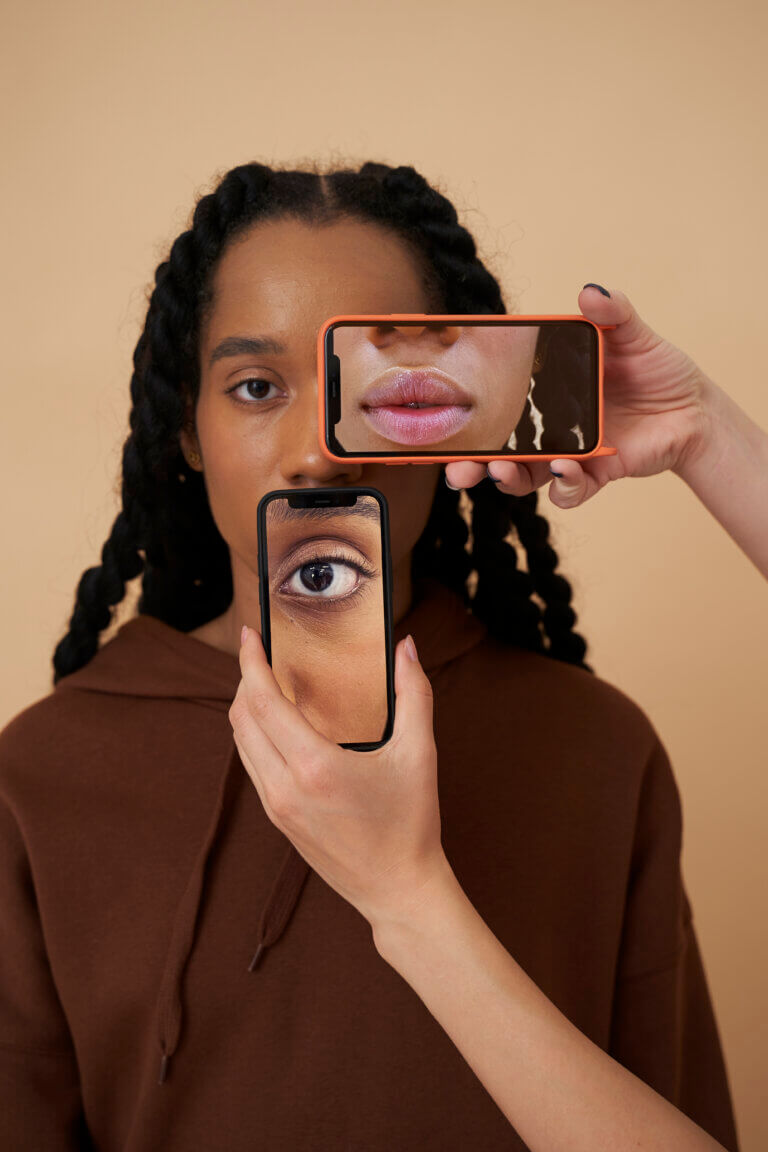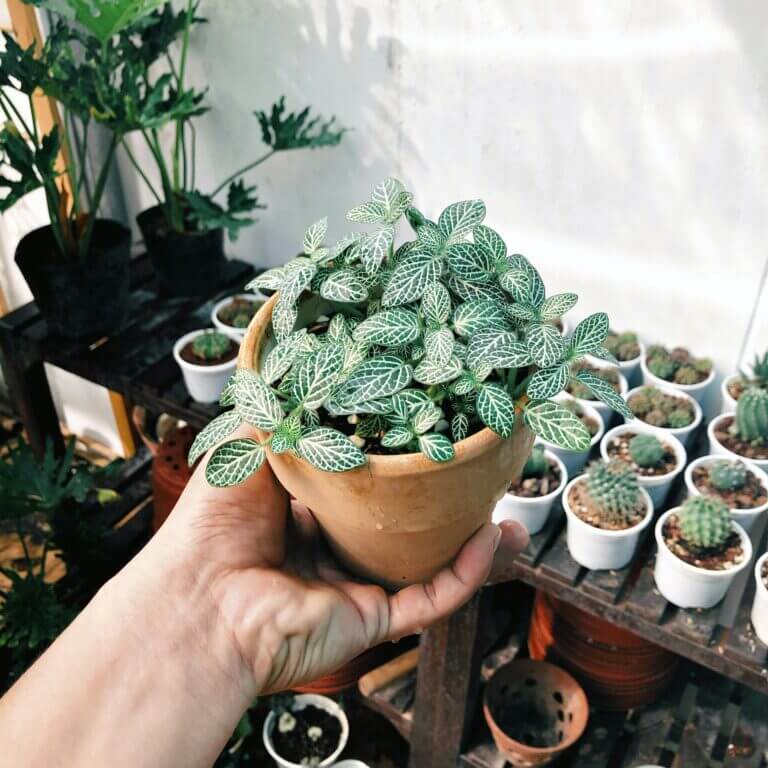Scalp & Hair Health: The Foundation for Beautiful Hair
Have you ever thought about how your scalp affects your hair’s health? Just like your skin, your scalp needs care to stay healthy. This care is key to having beautiful hair.
Traditionally, we’ve focused on treating our hair, not our scalp. A new approach is emerging. It views hair care like skincare – as a way to prevent problems and promote wellness. By caring for your scalp, you’re setting the stage for healthier, more vibrant hair.
This holistic view shows how important scalp and hair health are. It helps us understand the role of the scalp in our hair’s appearance and well-being. This approach encourages a more detailed understanding of hair care.
The Paradigm Shift: Haircare as the New Skincare
The haircare world is changing fast, just like the skincare industry did years ago. People now understand how important scalp care is for healthy hair.
The Preventative Approach to Hair Health
It’s key to take a preventative approach to hair care. This means starting early to stop common hair and scalp problems.
Early Intervention Strategies
Starting early in hair care can greatly help your hair’s health. Use the right products for your hair and fix scalp issues quickly.
Long-term Benefits of Proactive Hair Care
Proactive hair care brings many benefits. You’ll see stronger hair, less breakage, and a healthier scalp. By caring for your hair, you can have beautiful, healthy hair for a long time.
Personalization in Hair Care Routines
Personalizing your hair care is crucial. Know your hair type and use products and methods that fit your needs.
Hair Type-Specific Solutions
Different hair needs different care. Whether your hair is dry, oily, or a mix, the right products can make a big difference.
Customized Formulations and Technologies
New hair care tech has led to tailored products. These use natural ingredients and science to give the best results.

The Wellness Connection to Beautiful Hair
Wellness is key to healthy, beautiful hair. What you eat, your lifestyle, and how you manage stress all affect your hair.
Nutrition and Lifestyle Factors
Eating well is vital for hair growth. Regular exercise and drinking enough water also help.
Stress Management for Hair Health
Too much stress can harm your hair, causing loss and scalp tension. Stress-reducing activities like meditation or yoga can help.
| Hair Care Aspect | Importance | Tips for Improvement |
|---|---|---|
| Nutrition | Essential for hair growth | Include foods rich in omega-3 fatty acids, zinc, and biotin |
| Stress Management | Critical for preventing hair loss | Practice yoga, meditation, or deep breathing exercises |
| Scalp Care | Vital for healthy hair follicles | Use gentle scalp massagers and appropriate shampoos |
Understanding Your Scalp: The Root of Hair Health
Your scalp is key to your hair’s health. Knowing how it works is vital for a full head of hair. It’s a complex system that affects hair growth and look.
Scalp Anatomy and Function
The scalp has several layers, with skin on the outside. Underneath, a dense tissue holds hair follicles, essential for hair growth. Knowing the scalp’s anatomy helps us understand its role in hair health.
Hair Follicles and Growth Cycles
Hair follicles are small pockets in the scalp where hair grows. Each follicle goes through three phases: anagen, catagen, and telogen. The anagen phase is when hair grows fast.
Sebaceous Glands and Natural Oils
Sebaceous glands make sebum, an oily substance that moisturizes and protects the scalp and hair. These natural oils are crucial for scalp and hair health.
Common Scalp Conditions and Their Impact on Hair
Scalp conditions like dandruff and seborrheic dermatitis can harm hair health. They cause flaking and irritation. Conditions like scalp psoriasis and folliculitis can lead to inflammation and affect hair growth.
Dandruff and Seborrheic Dermatitis
Dandruff causes flakes and itchiness on the scalp. Seborrheic dermatitis is more severe, causing redness, itching, and flaking. Both can be treated with the right scalp treatments.
Scalp Psoriasis and Folliculitis
Scalp psoriasis causes red, scaly patches. Folliculitis is inflammation of hair follicles, often from infections. Both need specific treatments to improve symptoms and scalp health.
Signs of a Healthy vs. Unhealthy Scalp
Knowing the signs of a healthy or unhealthy scalp is important for hair health. A healthy scalp is usually free from irritation and flaking.
Visual Indicators of Scalp Health
A healthy scalp looks balanced and has no excessive flaking or redness. An unhealthy scalp may show redness, irritation, or too much oil.
Sensation-Based Warning Signs
Itchiness, tenderness, or pain can mean an unhealthy scalp. Paying attention to these sensations helps spot problems early. This allows for quick action with scalp care and treatments.
Scalp & Hair Health: The Foundation of Beautiful Hair
Getting beautiful hair starts with knowing how your scalp and hair health are connected. Your scalp is like the soil for your hair, and its quality affects your hair’s health and look.
The Scalp-Hair Connection
Your hair’s health depends on your scalp’s condition. It’s important to understand this link.
How Follicle Health Determines Hair Quality
Your hair’s quality comes from your hair follicles’ health. Things like nutrient delivery and blood circulation are key. They affect your hair’s strength, growth, and look.
The Journey from Scalp to Strand
Your hair grows from the scalp to the end, facing various challenges. Knowing this journey helps spot and prevent problems.
How Scalp Health Affects Hair Growth and Appearance
Scalp health greatly influences hair growth and look. A healthy scalp means healthy hair growth. But an unhealthy scalp can cause hair thinning and loss.
Blood Circulation and Nutrient Delivery
Good blood circulation and nutrient delivery are vital for hair growth. They help your hair follicles get the nutrients and oxygen they need.
Inflammation’s Impact on Hair Growth
Inflammation can harm hair growth by damaging follicles and disrupting the growth cycle. It’s important to manage inflammation for healthy hair growth.
Balancing Scalp Microbiome for Optimal Hair Health
The scalp microbiome is crucial for hair health. Keeping a balance of good and bad microorganisms is key for a healthy scalp and beautiful hair.
Beneficial vs. Harmful Microorganisms
A healthy scalp has good microorganisms that support hair health. Bad ones can cause problems. Knowing this balance is essential for healthy hair.
Probiotic Approaches to Scalp Care
Using probiotics in scalp care helps keep a healthy balance of microorganisms. This supports optimal hair health and is part of achieving beautiful hair.
| Aspect | Healthy Scalp | Unhealthy Scalp |
|---|---|---|
| Blood Circulation | Adequate circulation for nutrient delivery | Poor circulation leading to nutrient deficiencies |
| Microbiome Balance | Balance of beneficial microorganisms | Overgrowth of harmful microorganisms |
| Hair Growth | Promotes healthy hair growth | Can lead to hair thinning and loss |
By focusing on hair health products and practices that support scalp health, you can achieve beautiful hair. This includes maintaining a balanced scalp microbiome, ensuring good blood circulation, and managing inflammation.
Essential Scalp Care Routine for Healthy Hair
Healthy, luscious hair starts with a well-cared-for scalp. Your scalp’s health is key to your hair’s quality and look. A consistent scalp care routine can greatly improve your hair’s health and look.
Daily Scalp Maintenance Practices
Daily care is vital for a healthy scalp. It includes gentle cleansing and proper brushing and stimulation.
Gentle Cleansing Techniques
Gentle cleansing removes dirt and oil without harming your scalp. Use a mild shampoo that fits your scalp type. Massage it gently into your scalp before rinsing well.
Proper Brushing and Stimulation
Brushing your hair not only detangles it but also stimulates your scalp. This promotes blood flow and healthy hair growth. Use a soft-bristled brush and gently massage your scalp in circular motions.
Weekly Scalp Treatment Regimens
Weekly treatments give your scalp an intense dose of nourishment and cleansing. This includes deep cleansing and detoxification, as well as hydration and nourishment protocols.
Deep Cleansing and Detoxification
Deep cleansing removes product buildup and impurities that clog your scalp’s pores. Use a clarifying shampoo or a scalp scrub once a week to detoxify your scalp.
Hydration and Nourishment Protocols
Hydrating your scalp is crucial for its health. Apply a scalp serum or mask with nourishing ingredients like argan oil, coconut oil, or shea butter. This keeps your scalp moisturized.
Seasonal Adjustments for Scalp Care
Your scalp care routine should change with the seasons. This addresses challenges like dryness in winter and UV damage in summer.
Winter Protection Strategies
In winter, protect your scalp from dryness and cold winds. Wear hats or use scalp serums with protective ingredients.
Summer UV and Heat Defense
In summer, defend your scalp against UV rays and heat. Use products with SPF or antioxidants to mitigate sun damage.
| Season | Scalp Care Focus | Recommended Products |
|---|---|---|
| Winter | Moisturizing and Protection | Scalp serums with argan oil, coconut oil |
| Summer | UV Protection and Cooling | Products with SPF, peppermint oil |
By following these practices, you can keep your scalp healthy and your hair beautiful all year.
Mastering Scalp Exfoliation Techniques
To get a healthy scalp, learning how to exfoliate is key. Exfoliating removes dead skin cells and helps hair grow. It also makes your hair look better.
Physical vs. Chemical Exfoliation Methods
There are two main ways to exfoliate your scalp: physical and chemical. Physical exfoliation uses tools like scrubs and brushes to remove dead skin cells.
Scrubs, Brushes, and Manual Tools
Scalp scrubs and brushes are good for removing dead skin. When picking a scrub, choose gentle ingredients to avoid scalp irritation.
AHAs, BHAs, and Enzyme Exfoliants
Chemical exfoliants like AHAs, BHAs, and enzymes break down dead skin cells without rubbing. They’re great for sensitive scalps.
Step-by-Step Guide to Proper Scalp Exfoliation
Pre-Exfoliation Preparation
Before you start, make sure your scalp is clean and free of buildup. Use a mild shampoo to wash your scalp.
Application and Removal Techniques
Follow the product’s instructions when applying your exfoliant. Massage it into your scalp gently, then rinse with warm water.
Frequency and Best Practices for Different Hair Types
| Hair Type | Exfoliation Frequency | Recommended Exfoliant |
|---|---|---|
| Oily | 2 times a week | BHA or Salicylic Acid |
| Dry | 1 time a week | Gentle Enzyme Exfoliant |
| Sensitive | Every 10 days | AHA or Gentle Scrub |
Post-Exfoliation Care and Protection
After exfoliating, apply a nourishing scalp serum or treatment. This will protect and hydrate your scalp.
Learning scalp exfoliation techniques can greatly improve your hair’s health and look. Regular exfoliation, along with the right products and techniques for your hair type, leads to a healthier scalp and more vibrant hair.
Top Scalp Serums for 2025: Innovation in Hair Care
In 2025, the hair care world is changing fast. Scalp serums are now key, tackling dryness, irritation, and thinning hair. They’re a big step forward in scalp health.
Hydrating and Nourishing Scalp Serums
Keeping the scalp moist is crucial for health. Serums with hyaluronic acid and ceramides do this well. They help keep moisture in and protect the scalp.
Hyaluronic Acid and Ceramide Formulations
Hyaluronic acid holds moisture, while ceramides fix the scalp’s lipid layer. Together, they make the scalp soft and strong.
Plant-Based Hydration Solutions
Natural lovers will like plant-based serums. Aloe vera and green tea extract hydrate gently, without harsh chemicals.
Anti-Inflammatory and Soothing Formulations
Some serums calm the scalp, easing inflammation and discomfort. They use CBD, adaptogens, Centella Asiatica, and niacinamide.
CBD and Adaptogenic Ingredients
CBD fights inflammation, and adaptogens help the scalp handle stress. They balance the scalp’s health.
Centella Asiatica and Niacinamide Treatments
Centella Asiatica heals, and niacinamide boosts circulation and reduces inflammation. They work together for a healthy scalp.
Growth-Stimulating Scalp Treatments
For thinning hair, growth serums are a good choice. They use peptides, growth factors, and new minoxidil options.
Peptide and Growth Factor Technologies
Peptides and growth factors boost hair growth. They help cells renew and extend the hair cycle.
Next-Generation Minoxidil Alternatives
New minoxidil options are safer and more effective. They aim to offer similar benefits without the old minoxidil’s side effects.
The hair care world is changing fast, thanks to scalp serums. Choosing the right serum can greatly improve your hair’s health and look.
Addressing Hair Thinning in Your 30s and 40s
Hair thinning in your 30s and 40s is common. It can be caused by hormonal changes and lifestyle choices. Knowing the causes and how to address them is key to keeping your hair healthy and dense.
Understanding the Causes of Premature Thinning
Premature hair thinning has many causes. Knowing these causes is the first step to fighting it.
Hormonal Influences and DHT Sensitivity
Hormonal changes, like testosterone turning into DHT, can cause hair thinning. DHT sensitivity makes hair follicles shrink, leading to thinner, shorter hairs. Early detection and action can fight DHT’s effects.
Lifestyle and Environmental Factors
Stress, poor diet, and pollution can also lead to hair thinning. Eating well and managing stress can help.
Preventative Strategies for Maintaining Hair Density
To keep your hair dense, use strategies that tackle thinning’s causes.
Early Intervention Protocols
Start with early treatments like DHT-blocking products or hair growth boosters. Getting advice from a dermatologist or trichologist is helpful.
Scalp Microcirculation Enhancement
Improving scalp blood flow through massage or treatments nourishes hair follicles. This promotes healthier hair growth.
Professional Treatments and At-Home Solutions
Professional treatments and home remedies can both help with hair thinning.
Low-Level Light Therapy and Microneedling
LLLT and microneedling are professional treatments that boost hair growth. LLLT uses lasers to stimulate hair, while microneedling creates injuries that stimulate growth factors.
Topical Anti-Thinning Formulations
Home treatments with minoxidil or saw palmetto can fight thinning. Using these consistently is important.
Understanding hair thinning causes and using treatments and strategies can help. This way, you can keep your hair healthy and full.
Hair Growth Supplements That Actually Work
Looking to boost hair growth? Supplements are a promising option. It’s key to know their benefits and how they work.
Essential Nutrients for Hair Growth
A balanced diet is crucial for healthy hair. Certain vitamins and minerals are vital for hair health.
Biotin, Zinc, and Iron: The Foundation Trio
Biotin strengthens hair follicles, aiding in growth. Zinc keeps hair follicles healthy. Iron ensures oxygen reaches follicles, supporting growth.
Omega Fatty Acids and Antioxidants
Omega fatty acids nourish the scalp, aiding hair growth. Antioxidants like Vitamin C and E protect follicles from damage, boosting hair health.
Science-Backed Supplement Ingredients
Some ingredients have shown to boost hair growth through studies.
Clinical Studies on Saw Palmetto and Pumpkin Seed
Saw Palmetto may block DHT, a hormone linked to hair loss. Pumpkin seed oil helps by reducing 5-alpha reductase activity, aiding growth.
Marine Collagen and Silica Efficacy
Marine collagen supports hair structure with amino acids. Silica strengthens follicles and improves texture, leading to healthier hair.
Realistic Expectations and Timeline for Results
Knowing the timeline and expectations is key when using hair growth supplements.
Short-term vs. Long-term Benefits
Supplements may improve scalp health and reduce shedding short-term. Long-term, they can lead to better growth and density.
Supplement Integration with Topical Treatments
Using supplements with topical treatments like serums can boost effectiveness. This multi-faceted approach supports hair health and growth.
Gray Hair Blending Techniques for 2025
In 2025, we’re focusing on gray hair blending techniques. These methods not only highlight your natural beauty but also boost your confidence. As gray hair becomes more accepted, the need for effective blending methods grows.
Low-Maintenance Color Solutions
Looking to blend gray hair without salon visits? Low-maintenance color solutions are a game-changer. Techniques like shadow roots and dimensional highlights create a look that grows out well.
Shadow Roots and Dimensional Highlights
Shadow roots use a darker shade at the roots for a seamless blend. Dimensional highlights add depth and texture, making hair vibrant and healthy. This combo works great for those with gray and colored hair.
Gloss Treatments and Demi-Permanent Options
Gloss treatments enhance color and shine. Demi-permanent options offer a less committed way to keep your color. These are perfect for adding color without long-term commitment.
Natural-Looking Transition Strategies
Transitioning to gray hair can be tough, but it can also be beautiful. Salt-and-pepper enhancement and gradual blending are popular for a natural look.
Salt-and-Pepper Enhancement Methods
Salt-and-pepper enhancement blends gray hair with colored hair for a natural look. It’s ideal for those embracing gray hair slowly.
Gradual Blending Approaches
Gradual blending slowly introduces gray hair into your color. It allows you to adjust at your own pace.
Innovative Products for Gray Hair Management
The market offers innovative products for managing gray hair. From color-depositing conditioners and masks to temporary root concealers and touch-up tools, there’s something for everyone.
Color-Depositing Conditioners and Masks
Color-depositing conditioners and masks maintain your color while nourishing your hair. They’re great for dry or damaged hair.
Temporary Root Concealers and Touch-Up Tools
Temporary root concealers and touch-up tools are perfect for quick fixes. They instantly cover gray roots and keep your look polished.
Conclusion: Investing in Your Hair’s Future
Starting with a healthy scalp is key to beautiful hair. Knowing your scalp’s needs and using the right care is a big step. It helps prevent scalp problems and boosts hair growth.
Adding scalp serums and hair growth supplements to your routine can be a game-changer. They nourish your scalp and help your hair grow. If you’re dealing with gray hair, blending techniques can give you a natural look.
Putting effort into your hair care will pay off with healthier, more vibrant hair. Try different treatments and products to find what suits you best. And don’t hesitate to get expert advice. With the right approach, you can have the beautiful hair you’ve always wanted.
FAQ
What are the key factors in maintaining healthy scalp and hair?
Keeping your scalp and hair healthy involves a few key steps. First, take care of your scalp with the right routines. Use products that are good for your hair. Also, eat well and manage stress to keep your hair looking great.
How often should I exfoliate my scalp?
How often you should exfoliate your scalp depends on your hair and scalp type. Most people do well with exfoliating once or twice a week. But, if you have an oily scalp or specific issues, you might need to do it more often.
What are the benefits of using scalp serums?
Scalp serums offer many benefits. They can hydrate, nourish, and even help with inflammation. They can also help your hair grow. Look for serums with hyaluronic acid, peptides, and CBD for different needs.
Can hair growth supplements really work?
Some hair growth supplements, backed by science, can help. Ingredients like biotin, saw palmetto, and marine collagen show promise. But, results can vary. Always have realistic expectations and use supplements with other hair care practices.
How can I address hair thinning in my 30s and 40s?
To tackle hair thinning, first understand its causes. Hormones and lifestyle play big roles. Use early prevention, improve scalp circulation, and try topical treatments. Professional options like low-level light therapy and microneedling can also help.
What are some effective gray hair blending techniques?
For blending gray hair, try low-maintenance colors like shadow roots and highlights. Natural looks can come from salt-and-pepper styles. Use products like color-depositing conditioners and temporary concealers for a natural look.
How does scalp health affect hair growth and appearance?
Scalp health is key for hair growth and look. A healthy scalp means better blood flow and a balanced microbiome. This leads to stronger, healthier hair. But, scalp issues like dandruff or psoriasis can harm your hair.
What are the signs of a healthy versus an unhealthy scalp?
A healthy scalp has balanced oil, no irritation, and normal shedding. Signs of an unhealthy scalp include too much oil or dryness, redness, itchiness, and flaking.







